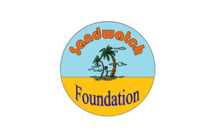 Science, Technology and Innovation play a crucial role in the Sendai Framework for Disaster Risk Reduction 2015-2030, especially for Priority Action 1 of the Sendai Framework: ‘Understanding disaster risk’. The latter indeed emphasizes the need for enhanced scientific and technical work on disaster risk reduction, prioritizing the development and dissemination of science-based risk knowledge, technology, and innovation.
Science, Technology and Innovation play a crucial role in the Sendai Framework for Disaster Risk Reduction 2015-2030, especially for Priority Action 1 of the Sendai Framework: ‘Understanding disaster risk’. The latter indeed emphasizes the need for enhanced scientific and technical work on disaster risk reduction, prioritizing the development and dissemination of science-based risk knowledge, technology, and innovation.
The Priority Action 3 is ‘Investing in disaster risk reduction for resilience’. Both public and private investment in disaster risk prevention and reduction through structural and non-structural measures are essential to enhance the economic, social, health and cultural resilience.
With the ‘S’ in UNESCO standing for ‘Science’, UNESCO is a leader in incorporating science, technology, and innovation into disaster risk reduction policies and strategies. In order to strengthen scientific capacities, UNESCO facilitates and implements technical trainings, workshops and research activities in disaster risk reduction. These activities result in creating networks of technical experts as well as in enhancing knowledge and producing materials and technologies to help decision-makers and stakeholders build or strengthen their capacities in disaster risk management.
UNESCO's Contribution
Sandwatch is an educational process through which school students, teachers and local communities work together in the field to monitor their coastal environments; identify and evaluate the threats, problems and conflicts facing them; and develop sustainable approaches to address them.

International Geoscience Programme
UNESCO is working with the International Union of Geological Sciences (IUGS) to mobilize global cooperation in the Earth Sciences through the International Geoscience Programme (IGCP). This Programme is providing a platform for scientists from across the world to push the frontiers of knowledge forward through concrete projects including Disaster Risk Reduction.

I-REACT (Improving Resilience to Emergencies through Advanced Cyber Technologies): aims to use social media, smartphones and wearables to improve disaster risk management. It will integrate multiple existing systems and European assets to facilitate early planning of disaster risk reduction activities.

Intergovernmental Hydrological Programme (IHP)
IHP is the only intergovernmental programme of the United Nations system devoted to water research and management, and related education and capacity development.

Enhancing Climate Services for Improved Water Managemen (CliMWar)
The overall objective of the project is to provide reliable climate services to monitor and forecast droughts and floods at the local level to improve national risk management strategies and to lower the impact of water-related hazards on vulnerable communities through improved communication and outreach in pilot regions of Latin America, the Caribbean and Africa, with particular attention to climate change vulnerabilities.
UNESCO's Partners

STAG (Science and Technology Advisory Group on DRR)
The objective of the STAG is to provide ad hoc advice to SRSG on DRR related STI matters. UNESCO is represented at the regional STAGs by the regional SC offices.

International Consortium on Landslides (ICL)
The ICL is a non-governmental and non-profit scientific organization established in Kyoto with help of UNESCO, which focuses on landslide research. It is committed to integrating landslide sciences and technology within the appropriate cultural and social contexts, to coordinating international landslide expertise and to develop landslide monitoring networks in the long term.

IKCEST is the Category 2 Centre of UNESCO and it collaborates with UNESCO on DRR through knowledge platform and big data.

Shimane University is UNESCO Disaster Risk Reduction Knowledge ServiceO Chair on landslide DRR and is the secretariat of the International Consortium of Geohazard DRR.

Libyan National Seismological Network (LNSN)
UNESCO is supporting Libyan scientists to establish the national seismological network.

REL (Reducing Earthquake Losses)
The REL scientific programmes were jointly launched by UNESCO and the US Geological Survey (USGS) in earthquake-prone regions such as the Eastern Mediterranean Region (RELEMR), the South Asia Region (RELSAR), and the Northeast Asia Region (RELNAR), to foster data exchange, conduct joint activities and experiments and improve hazard assessments in the region.



